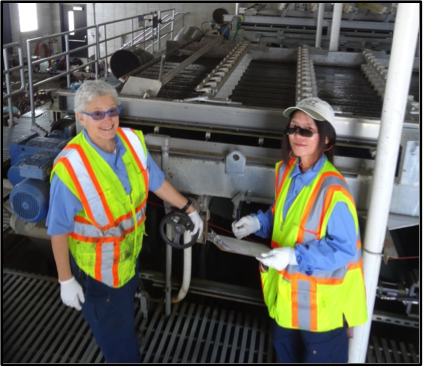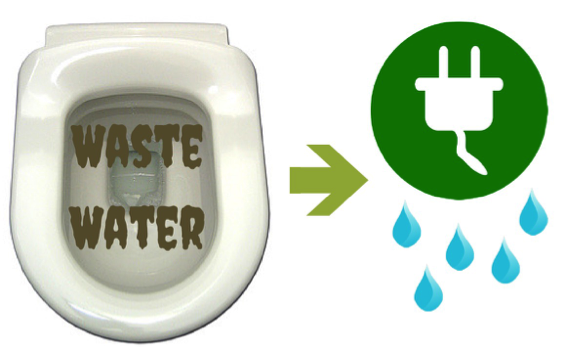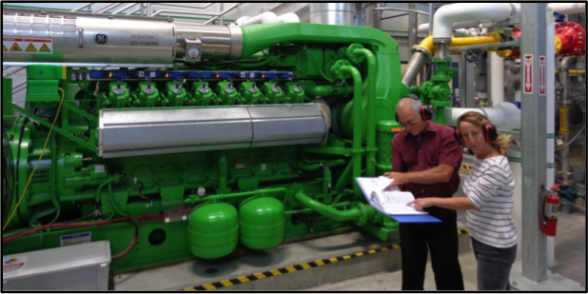The Golden Age of Wastewater

Who will you meet?
Cities are innovating, companies are pivoting, and start-ups are growing. Like you, every urban practitioner has a remarkable story of insight and challenge from the past year.
Meet these peers and discuss the future of cities in the new Meeting of the Minds Executive Cohort Program. Replace boring virtual summits with facilitated, online, small-group discussions where you can make real connections with extraordinary, like-minded people.
Year-round fresh produce, daily farmer’s markets, chefs from every continent – it’s no wonder that the San Francisco Bay Area is famous for its food culture. Yet we rarely celebrate the other side of digestion. At its best, wastewater is an impolite, unavoidable nuisance. At its worst, it’s a vector of deadly disease.
But some municipalities, such as the City of Hayward in the San Francisco Bay Area, are here to report on a new era for this much maligned matter. Because once we get past its undesirable exterior, wastewater is an excellent source of renewable energy mixed with an excellent source of water.
Hayward’s Water Pollution Control Facility uses wastewater to generate half of the City’s municipal electricity needs and save 2.5 million gallons of drinking water every day. We were recently recognized by the US Environmental Protection Agency as one of the nation’s top-thirty on-site renewable energy generators.
We welcome you to the Golden Age of Wastewater. We hope that our journey inspires you to take a second look at what you consider waste.
Wastewater in the Twentieth Century

The primary responsibility of wastewater workers is to protect public health and the environment
Modern sewer systems came out of a public health effort to combat infectious disease. Diseases like cholera and typhoid fever were spread through wastewater-contaminated drinking water. Thus the role of wastewater workers throughout the twentieth century was to protect us and our environment from this deadly substance.
Isolate and Transport
At the turn of the twentieth century, most regions of the United States focused on safely moving wastewater away from the population, either through septic systems or simple sewer systems that dumped raw wastewater into the nearby bodies of water.
Collect and Treat
By mid-century the focus had turned to treating the wastewater to further prevent disease. From the 1940s through 1970s, dozens of wastewater treatment plants opened along the shoreline of the San Francisco Bay.
Protecting the Environment
At first, wastewater treatment was inconsistent and didn’t catch certain pollutants. By the 1960s, the San Francisco Bay was experiencing major environmental stress from all of the material that was being discharged into its waters. In an effort to address this issue, the federal government passed the Clean Water Act in 1972 with the goal of eliminating all discharged pollutants.
This is a Success Story!
The public health efforts of last century led to a 90% decrease in deaths from infectious disease in the United States. The Clean Water Act created one of the most successful environmental programs ever implemented, resulting in a 90% drop in the material discharged into by Bay.

City of Hayward Wastewater Workers
Hayward opened its Water Pollution Control Facility in 1952. Today, Hayward’s Treatment Facility meets and often exceeds federal discharge standards 24 hours a day, 365 days a year.
So what’s next?
With the health and environmental concerns under control, we’ve set our sights on a new goal.
Wastewater in the Twenty-First Century
From Refuse to Renewable Resource

Wastewater treatment facilities are extremely energy intensive. A vast amount of power is needed to pump the wastewater through the treatment processes and into the Bay. Ten years ago, Hayward’s Facility was the City’s largest energy user, accounting for approximately 30% of the City’s PG&E bills and municipal greenhouse gas emissions.
An Expanding Role: Protectors and Providers
In the early 2000s, the City of Hayward set the goal of generating 100% of the Facility’s electricity and heating needs through on-site renewable sources. The Facility’s Green Power Program includes the following technologies:

Hayward’s new cogeneration engine, installed in 2014
Fuel a Cogeneration Engine with Biogas
Many treatment facilities use cogeneration engines to turn bio-gas from sludge solids—the ‘waste’ in the wastewater – into energy. In 2014, Hayward upgraded its system to a new 1.13-megawatt, first-in-its-class clean and highly efficient engine. The new engine is twice as large in terms of rated power and twice as efficient at using every unit of bio-gas to produce electricity, so it can produce three to four times more energy than the old system. On an average day, the new cogeneration engine generates enough energy to power around 900 homes and heat around 400 homes.

Fats, oils, and grease receiving station, installed in 2013
Add Additional Fatty Fuel from Commercial Customers
Fats, oils and grease (FOG) are a super fuel to our cogeneration engine. Hayward built and installed a new FOG receiving station that accepts the materials from area restaurants and a nearby facility that produces biofuel from cooking oil. The Facility now accepts about 4 million gallons of FOG waste a year, generating about $220,000 in revenue. As an added benefit, this oil and grease is not being landfilled or discharged into the sewer, which can clog pipes.

1 MW Photovoltaic Array at the Treatment Facility, installed in 2011
Extra Credit: Implement Large-Scale Solar
Located on open shoreline, the Facility site is a prime location for large-scale solar. In 2011, staff repurposed land at the Facility to install a 1-megawatt photovoltaic array – 5,152 solar panels. The array is the second largest solar installation in Alameda County. Generation of electricity has been so successful that a second 1-megawatt array is being planned at the Facility. Currently, solar production is enough to power 220 homes.
$$ Savings $$
Today, the Facility is generating nearly 11 million kilowatt-hours of green power annually, exceeding all of its electricity and heating needs. The green power program has become one of the main elements that the City is using to meet its municipal Climate goals. In addition, the program saves the City an estimated $400,000 annually in electricity and gas costs.
Energy Used and Generated at the Water Pollution Control Facility
Because there is excess energy produced, Hayward became the first city and the only wastewater treatment facility to participate in a PG&E program called Renewable Energy Self-Generating Bill Credit Transfer (RES-BCT). The program allows customers to generate electricity at one account and transfer excess amounts as a bill credit to other accounts. Hayward is allowed to power up to 29 accounts at other City facilities, including its City Hall.

Purple Power (recycled water is distributed through purple pipe)
Don’t Forget the Water
Today’s wastewater treatment processes are so effective that the treated water is safe to use. And we’ve figured out ways to use it.
In 2013, a gas-fired energy center went operational near Hayward’s Facility. Rather than use drinking water to cool plant’s steam generators, the Facility provides the center with an average of 2.5 million gallons a day of secondary treated water. This is equivalent to saving enough drinking water to supply 12,500 homes.
Hayward is currently constructing a Recycled Water Facility to distribute 260,000 gallons per day of recycled water to 24 industrial locations. The Facility will distribute the recycled water to customers through four and a half miles purple pipe.
Join Our Wastewater Celebration
There are more than 900 wastewater treatment facilities in California alone, processing over 4 billion gallons of wastewater every day. Think of the energy, water, and greenhouse gas savings we could generate if every community used its wastewater as a resource rather than waste.
Discussion
Leave your comment below, or reply to others.
Please note that this comment section is for thoughtful, on-topic discussions. Admin approval is required for all comments. Your comment may be edited if it contains grammatical errors. Low effort, self-promotional, or impolite comments will be deleted.
1 Comment
Submit a Comment
Read more from MeetingoftheMinds.org
Spotlighting innovations in urban sustainability and connected technology
Middle-Mile Networks: The Middleman of Internet Connectivity
The development of public, open-access middle mile infrastructure can expand internet networks closer to unserved and underserved communities while offering equal opportunity for ISPs to link cost effectively to last mile infrastructure. This strategy would connect more Americans to high-speed internet while also driving down prices by increasing competition among local ISPs.
In addition to potentially helping narrow the digital divide, middle mile infrastructure would also provide backup options for networks if one connection pathway fails, and it would help support regional economic development by connecting businesses.
Wildfire Risk Reduction: Connecting the Dots
One of the most visceral manifestations of the combined problems of urbanization and climate change are the enormous wildfires that engulf areas of the American West. Fire behavior itself is now changing. Over 120 years of well-intentioned fire suppression have created huge reserves of fuel which, when combined with warmer temperatures and drought-dried landscapes, create unstoppable fires that spread with extreme speed, jump fire-breaks, level entire towns, take lives and destroy hundreds of thousands of acres, even in landscapes that are conditioned to employ fire as part of their reproductive cycle.
ARISE-US recently held a very successful symposium, “Wildfire Risk Reduction – Connecting the Dots” for wildfire stakeholders – insurers, US Forest Service, engineers, fire awareness NGOs and others – to discuss the issues and their possible solutions. This article sets out some of the major points to emerge.
Innovating Our Way Out of Crisis
Whether deep freezes in Texas, wildfires in California, hurricanes along the Gulf Coast, or any other calamity, our innovations today will build the reliable, resilient, equitable, and prosperous grid tomorrow. Innovation, in short, combines the dream of what’s possible with the pragmatism of what’s practical. That’s the big-idea, hard-reality approach that helped transform Texas into the world’s energy powerhouse — from oil and gas to zero-emissions wind, sun, and, soon, geothermal.
It’s time to make the production and consumption of energy faster, smarter, cleaner, more resilient, and more efficient. Business leaders, political leaders, the energy sector, and savvy citizens have the power to put investment and practices in place that support a robust energy innovation ecosystem. So, saddle up.






I love the Purple Pipe! Thanks for the great work!